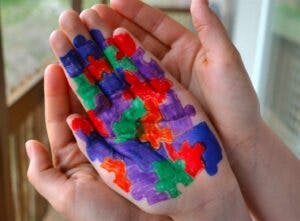How to Be a Friend to Someone with Autism

Friendship is one of the most beautiful aspects of life.

Without friendship and companions, an individual may feel lonely and as though they are facing the world alone. Childhood friendships are especially important, as these friendships can help shape who they are as an individual during the most formative years of their life. A few benefits of childhood friendships include:
- Learning how to deal with other types of personalities and other viewpoints of life. Your child can learn about the different ways in which people think, act and speak.
- Friendships can give your child a sense of purpose and make them feel as though they belong to something other than your family. This will make them feel valued, wanted and important.
- The memories that they will make with their companion and friend will last a lifetime. Some memories may fade with age, but those special moments that are significant enough to leave a lasting impression on the heart will be there forever.
- Your child is more likely to spend time away from the television, video games and electronic devices. These devices are fine in doses, but when a child does not have a companion or a friend to fall back on or play with, he or she is more likely to gravitate towards these solo activities.
- Your child will increase multiple skills including problem solving, socialization, proper manners, imagination, decision making, leadership and communication.
We know that it can be challenging to find ways to relate to and befriend an individual that is on the Autism spectrum, as you may see the world differently and feel as though you cannot make them happy as a friend. That is not always the case, in fact individuals with Autism may want to be friends with you, but have a harder time showing their affection, passion and enthusiasm about relationships. We think it is important to know how you can befriend a person that is on the Autism spectrum, because they may become one of the most important people in the world to you, but you may never have the chance to get to know them due to differences intellectually. Look at our tips below to develop a magical friendship that may last a lifetime!
- Do not assume that he or she does not want to be your friend, just because they do not vocalize it. Many people on the Autism spectrum have trouble communicating their thoughts and feelings to people, so we encourage you to not assume that if he or she does not show or express obvious interest in being your friend, they truly are not interested. Try asking them to eat lunch with you, take a walk or to just hang out and talk to each other. By you initiating the plans, this will allow the other person to express their interest in whether they want to befriend you or not, without them initiating the contact.
- Communication should be clear, concise and direct. Individuals with Autism normally respond well to short, to the point sentences that uses direct language. You should also be sure to speak at a reasonable volume and be sure to speak slowly, but not too slowly! You don’t want to offend them, after all! Give the individual time to respond to your sentences, allowing a conversation to flow freely.
- Make sure that you are respectful of them and view them as a person, not as a project. We know that your intentions may be pure, and you may want to make a new friend, but to an individual with Autism, they may feel differently about your intentions. Try not to look completely past their disability or try to change them, as it is an imperative part of their identity and their personality, but rather embrace it and appreciate them for who they are.
As the parent or loved one of an individual with Autism, it is important to know that you heavily influence both your child and those that are around you. Unfortunately, Autism is not a topic that everyone is familiar with or experts in. It is important to be the advocate for your child, both with third parties and directly with your child. There are two ways that you can strategize with your child, their peers and your friends or family. The first is by adopting assimilation strategies.
Assimilation Techniques
Assimilation strategies are ways to integrate friendships into your loved one’s life without forcing a new topic onto them in an aggressive manner. Assimilation strategies include explaining what a friend is and how they will benefit from a friendship. It is important to note that each individual with Autism may react differently to this approach and some may thrive off of conversation while others may respond better to real life examples and situations. Another assimilation strategy is by using stories, scripts or visuals to represent what a friendship is and how your child can have one!
It is important to teach them the proper language to use during their conversations with their new-found friends, such as saying “please” and “thank you,” along with any language that you want your child to avoid. This is sometimes best received by someone on the Autism Spectrum by role-playing with someone that they are familiar with. They may feel more comfortable in real life situations knowing that they had practiced similar situations with a trusted family member, such as their parents or sibling. Assimilation strategies can help the individual with Autism learn how to function in social settings and how friendships will enhance and enrich their life.
Accommodation Strategies
Some individuals with Autism may respond better to another type of strategic interaction called accommodation strategies.

Unlike assimilation strategies, accommodation strategies focus on what the individual with Autism enjoys and thrives off, rather than teaching them how to respond to the outside world. One of the best ways to go about accommodation strategies is to explain to people outside of your inner circle about Autism. Educating others about the topic can help the people surrounding your child learn about the inner workings of an individual with Autism. Explaining to others that your child may not enjoy loud noises, physical contact or certain topics of conversation can help facilitate friendships.
Another accommodation strategy is giving your child the best chance to meet someone that they will click with by joining groups or clubs with like-minded individuals. For example, if your loved one with Autism thoroughly enjoys looking at airplanes and learning about airplanes, it may be beneficial to find a local group that goes and looks at airplanes together. This will not only allow your loved one to enjoy themselves, but it will give them the opportunity to do so with likeminded people that enjoy the same things that they do. This gives them a greater chance of making friends with someone that they will feel a connection with. Lastly, one of the most beneficial accommodation strategies is to help find your loved one a peer partner. A peer partner is someone that knows your loved one, knows their triggers and their interests and is comfortable with them. Their peer partner will help facilitate healthy and positive interactions with people that may not be as comfortable with your loved one with Autism. For example, this may be a family friend that has grown up with your loved one or a teachers aide that has been an instrumental part in your loved one’s upbringing.
We hope that these tips will help you befriend an individual that is on the Autism spectrum and to create a bond that will last a lifetime. Remember that your friend may not have a positive social interaction with everyone, so be sure to stick up for them if you see them in a dilemma where they need assistance. We hope that you establish relationships that you will cherish deeply.
